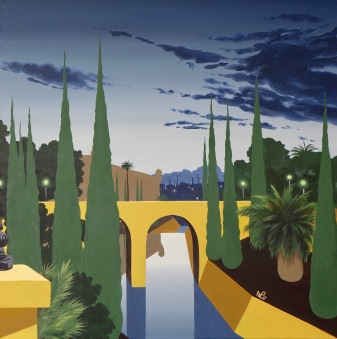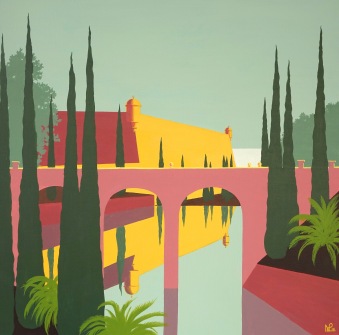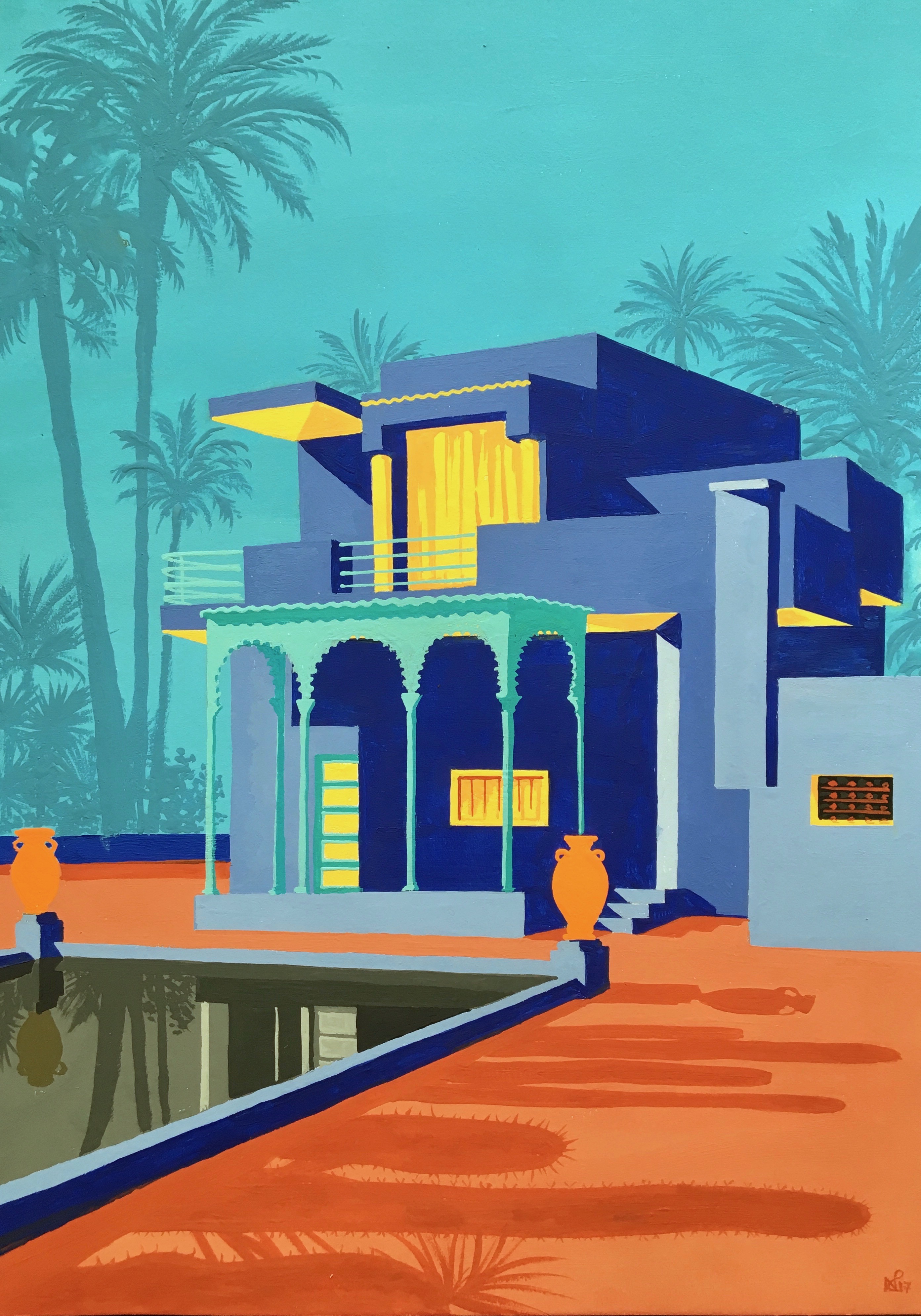Here’s hoping: Horray for the death of Conceptual Art

I was reading an excellent article yesterday by Bryan Appleyard in the magazine Intelligent Life. There, he reports on Andy Warhol and the unsurpassed, astronomically high prices his works can achieve. The article was refreshingly honest, challenging the wider perception of Warhol as a genius of Art, questioning the integrity of the market for his work, and concluding, finally, that the world of conceptual art, which was prompted so sensationally by Warhol with his soulless soup cans and unchallenging, repetitive silk-screen printed celebrity faces, is now over. Conceptual art, that is art driven by ideas rather than sensuous, emotional engagement has, he says, had its time, its 20 year reign over the art world expired.
The article is like a fresh air in an art world which seems to me to be so inherently pretentious at the same time as being so stagnant in the putrefaction of its own closed-door confines that there is no room left for a rational spokesman standing up for the middle man, asking, challenging: is that art? Isn’t that an utter piece of rubbish? Too often we are presented with a heap of detritus/ moulding bed sheets, used condoms etc, and because it is in a gallery, we are suppose to treat it as art. It’s extremely cringeworthy when I see clearly educated people attending a gallery, speaking pretentiously between one another about the fall of the light, the emotional landscape and the artistic intention adhering to a black sack in the corner of a gallery. For all they know, it might have been abandoned there in error by the cleaners.
Art has become smutty too. Art should be about engaging the everyday public, educating, stimulating, bringing some diversity and cultural enhancement to their lives. How then does a recent installation at the Saatchi Gallery, The Healers, by David Aitmejd, which presents a group of life-size sculptures of men (with wings) erotically engaged, sticking their hands, tongues and mouths in and around all number of bits of one another, enhance the cultural lives of the viewing public? Surely this is porn, not art? And free for all to see? If I had taken my young nephew along on an innocuous daytrip to the gallery, I would have been appalled. Equally so with the next offering by Saatchi, two “sculptures” by Dirk Skreber: Crash 1 and Crash 2, which look to be two crushed up cars straight out of an accident. The stale smell of car oil reminded me of my own accident as soon as I walked in. Is this, then, meant to entertain us? Notably, the name of the Saatchi exhibition in which these works were included is The Shape of Things to Come. I very much hope not.
I should emphasise that I am not antediluvian, incapable of moving with the times. Nor am I adverse to contemporary art. I am, for example, fond of Rothko. I find his monotonous one-coloured canvases strangely moving as they appear to vibrate menacingly before one’s very eyes. I also like the work of Warhol, in the same way that I like the latest collection by Habitat or Zara Home. The fact is, his work is inherently decorative, and it does, by his own admission, lack emotion. It was mass-produced, like a machine. The silk-printing method which dominated his career is also used in the fabrication of expensive wall papers. So isn’t the problem here really all about categorisation? Replace the description “Art” with “interior design” for a Warhol work, and suddenly the great conflict between an utterly unengaging screen-print and a gallery audience makes sense: That painting should be in a furniture shop, where it would enhance the most contemporary of sofas. And for those piles of rubbish in the corner of a contemporary gallery: well, they would be recategorised as what they always were: “rubbish”. And Aitmejd’s work: “Porn”.
If only it was so simple. Sadly, the art world is dominated by extraordinarily rich people who drive up prices and are the sole navigators steering the direction of the market. If some rubbish is displayed in a rich man’s gallery, that is enough to make other rich men pay out shed loads for it. Just look at Tracey Emin. Now she is a Royal Academician, she gets to submit to the RA’s Summer Exhibition every year. And for the past couple of years, she has done so, submitting “sketches” of such poor quality a toddler, let alone a child, could have done better. She didn’t even bother to draw them on fresh paper. For example, in 2011, her work Me too – Glad to hear I’m a Happy Girl is simply a sentence badly written in the middle of paper with a small blob underneath. The sentence: “Glad your a happy girl” isn’t even spelt correctly. And the price for this masterpiece? £18,000. She sells similar scrawls in print runs of around 100, and guess what? Every single print is sold out by the close of the preview days. The RA Friends attending these preview days at the Royal Academy must know what art is. They attend enough blockbuster exhibitions at the place. But why then do they buy the Emin scribbles? Not to hang on their walls I bet – but because they believe it will be an investment. And it is exactly this kind of thinking which promotes the worst of artists to the highest tiers of the artistic glitterati.
So what does the future hold? Well for one thing the big spenders and the corporate stronghold over the art world is weakening as the economic landscape all around us has collapsed. By contrast, the UK’s public government-sponsored galleries, amongst them the National Gallery and Tate, have recently reported visitor figures doubling over the last decade. In the meantime there does seem to have been a real shift away from rotting sharks floating in formaldehyde to beautiful, figurative art painted on canvas. For example, the press and art audiences have been waxing lyrical over the current Da Vinci blockbuster at London’s National Gallery, something which demonstrates that there is, after all, a real appreciation and engagement with real, genuine talent. For those audiences, the cult of artist celebrity is unimportant: who really knows much about Da Vinci after all. Rather, what thrills and awes those visitors is the wonder of the paintings as well as the strength of the emotional reaction they trigger.
But must our appreciation of art always be retrospective? Isn’t it a slightly deflating thought that the best of art has already been made, and that nothing new, beautiful and exciting will ever be created again? The problem is, we now live in a world where there are so many people, and such a rich history behind us that everything already seems to have been done. For the Monets and Picassos, breaking free of decades of artistic shackling and censorship under the hands of the sponsoring authorities, there was so much in art ripe to be explored. Now that the conservative figurative image has been cubed, cut up, abstracted and atomised beyond all recognition, and canvases have been painted blank, burnt and torn up, what else can be done which will give THIS generation a credible entry in the volume of art history?
It may be time to go back to figurative art, to aim for painted perfection. To paint like the canvas is a photograph. This is being done by many artists, not least by the majority whose works seem to be accepted into the National Portrait Gallery’s portrait prize each year. But while these works clearly take great skill in their execution, they are so similar to a photograph, one wonders why the artist bothered to paint it in the first place. Being so perfect, they tend to lack soul, and so the problem with Warhol comes round again.
Personally I’m all for the likes of David Hockney, vivid colourful paintings which offer still recognisable images, but showing originality and whimsicality in their composition. But how does Hockney compare to Picasso or Monet on the revolutionary map? Or maybe this search for a revolution, for something new and controversial is the real problem, the reason why artists are trying to shock at the very limits of their imagination rather than just concentrate on creating something life-enhancing. As a society we have itchy feet. We always want something new.
These are all very difficult questions for which there is no clear answer. For my part, I carry on painting what makes me happy, hoping that those paintings will, in turn, bring happiness and enhancement to other people. In the meantime, it is extremely encouraging that the world seems to be opening its cynical eyes to the world of conceptual art which has forced itself on the art market, devoid of skill or sophistication, for so long, while in the public galleries, more and more people are realising the great value which art has to offer in enhancing their every day lives. For as the role of religion in society continues to dissolve, and economic disenfranchisement rots away at society’s optimism, it is art, as a historical and social narrator, commentator and educator that will continue to play a crucial role for the good of society as a whole.











































Very true. I entirely agree. Good blog
don’t worry, 3D printing will be the true end of conceptual art, as it will be for many things